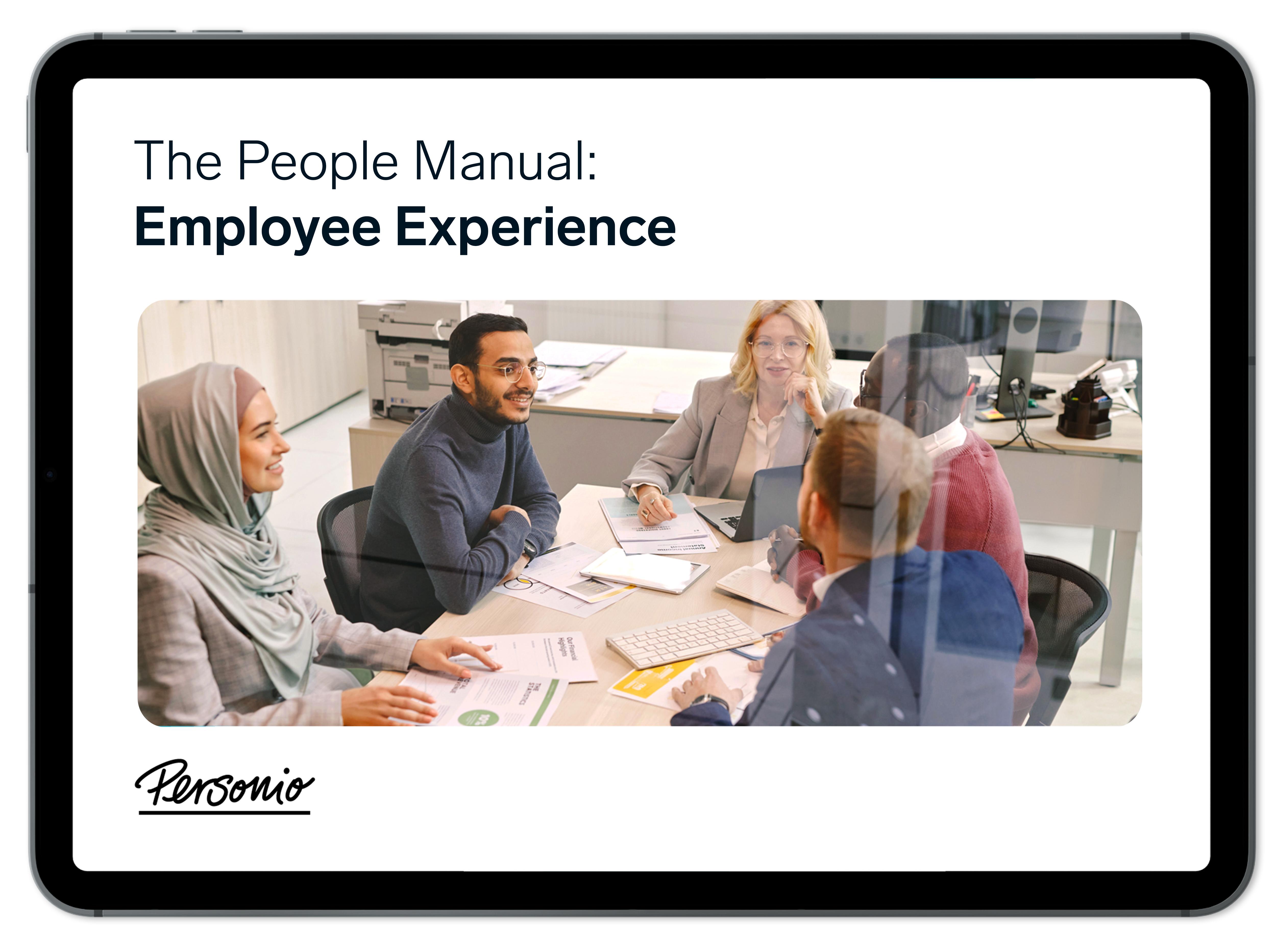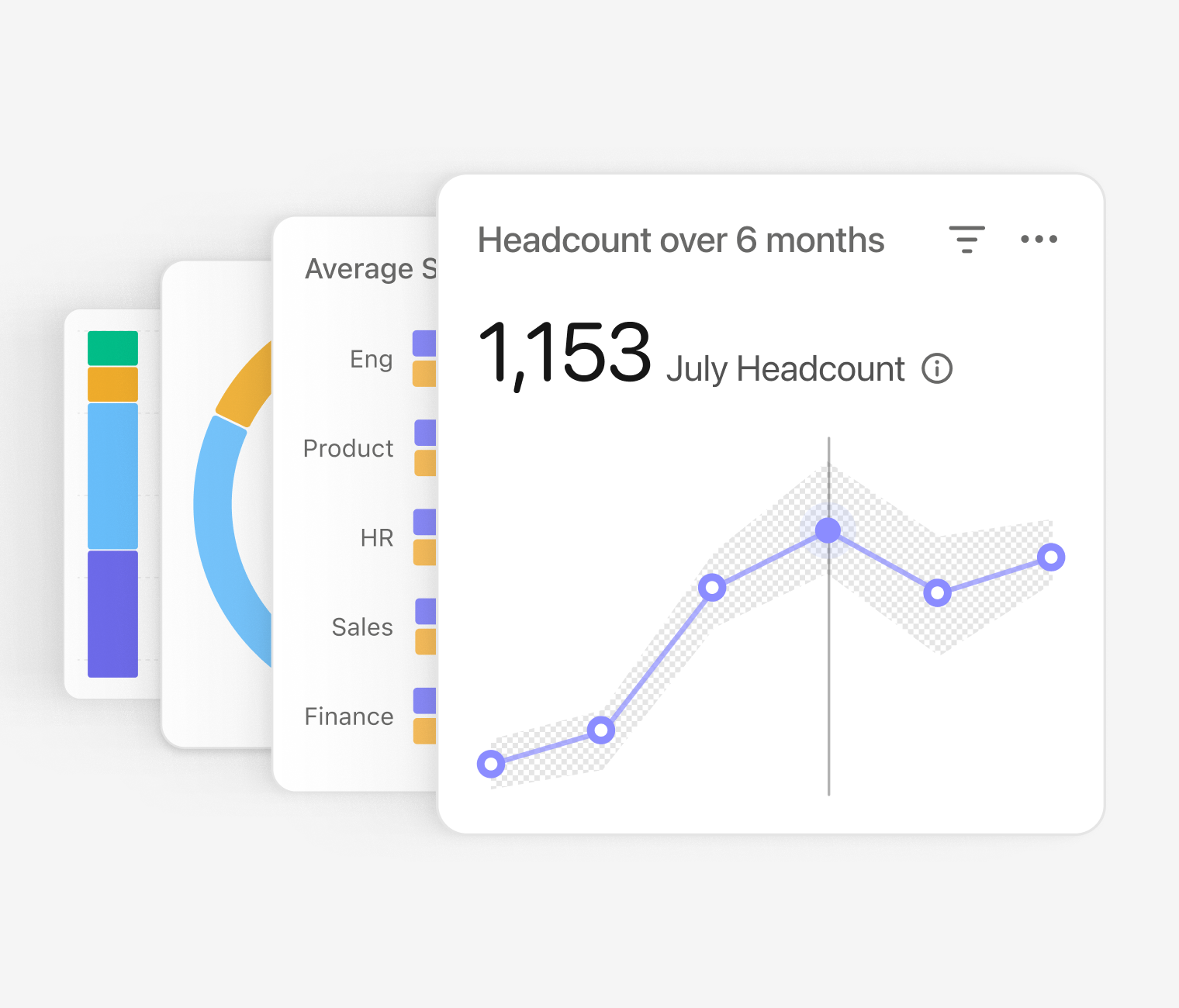Candidate Experience: Definition, Process, And Best Practices

Workers on the job hunt often care about candidate experience more than anything else. After all, It gives them a glimpse into what it would be like to work for your organisation and, ideally, convinces them you're the best team to join.
In this article, you’ll learn what candidate experience should include, how to build a positive candidate experience, and the best practices you should apply to ensure an effective end-to-end journey for job applicants.
Ready to focus on every element of employee experience? Download our guide.What Is Candidate Experience?
Candidate experience is how an applicant feels when moving through your organisation’s hiring process. This includes their initial job search and application process, as well as your organisation’s screening methods, interviews (like a semi-structured interview), and onboarding processes.
Does Candidate Experience Really Matter?
A positive candidate experience can make the recruitment process easier for both the applicant and the organisation, too. 58% of surveyed candidates feel that a good recruitment process increases the likelihood of them accepting the role.
A negative candidate experience can lead to wasted time and resources, as well as poor employee engagement. It can also damage your company’s reputation, considering 72% of candidates who’ve had a poor recruiting experience have shared it online or with someone.
In the end, it can cost you a lot of talent.
5 Key Benefits Of Great Candidate Experience
The good news is that if someone is applying to work at your organisation, it means they have a positive perception of who you are and what you do.
A great candidate experience can help bolster their opinion and bring you a long list of advantages, including:
1. A Competitive Advantage
By providing applicants with a high-quality candidate experience, you’re setting your company apart from others who don’t follow up or give that same level of service. Even if they don’t get the job, their positive experience can encourage them to apply again down the road when they have more experience (or a better-suited position opens up) or recommend your company to their peers.
2. Shared Ethical Values
People want to work for an ethical company and one that respects employees’ time and experience. Having a streamlined, well-thought-out candidate experience and personal, transparent communications throughout the process demonstrates that your organisation respects the candidate’s time and effort.
This approach can help the candidate feel aligned with the company’s mission and values before their first day.
3. Longer, Happier Employee Retention
Better candidate experiences can lead to happier employees, higher engagement, and longer retention. Like a good first date, a positive candidate experience sets the tone for the rest of their employment with your company.
4. Cut Costs
Hiring is expensive — and re-hiring after a bad hire even more so. With a well-structured candidate experience, you can weed out applicants that don’t fit the bill, streamline the process with automated systems, and set processes that help you fill the role quickly without losing money or sales.
5. Hiring Top Talent Sooner
A great candidate experience impresses job seekers with its ease. By simplifying the recruiting and application process, you’re opening the floodgates to more qualified candidates and can hire them before your competition does.
Half a decade of insights on employee experience

Our "People Manual" covers all things related to employee experience and developing initiatives that result in more engaged employees. Grab your free copy right now.
Download It TodayHow To Build A Positive Candidate Experience Process
When it comes to candidate experience, the ideal result for both the employee and the company is a smooth and hassle-free process that results in the perfect match. Here’s how you can build a positive candidate experience process from start to finish:
1. Assess Your Current Candidate Experience
First, survey your most recent applicants and successful hires to gain insight into their candidate experience. Keep the survey short and ask questions such as:
What role did you apply for?
Who did you interact with?
How far along in the process did you get?
What went well?
What could we improve?
Would you recommend the experience to a peer?
Then, self-evaluate your current candidate experience by looking into your application rates, offer acceptance rates, and employee reviews to paint a clearer picture.
2. Create Employee Personas
Think of your candidates like customers. When it comes to marketing, you need to create a persona (a semi-fictional representation of your ideal customer) to create a marketing strategy that attracts them. In this case, your persona will cover things like their educational background, experience, skills, goals, pain points, and where they search for jobs online.
By creating a persona for your desired candidate, you’ll better understand what type of person should fill the role and where they search for jobs online. It also helps you market to them more effectively, communicate with them better, and fill the role faster.
3. Provide Clear Job Descriptions
Review the job description to ensure it’s up to date and accurately reflects the position. Consult with the manager/supervisor or others in that role to ensure no responsibilities are missing or need to be updated. If you skip this step and a successful applicant gets hired on, they may not have the skills or desire to take on the role — and the hiring process will start all over again.
4. Make The Application Easy
It’s easy to assume that a long application will help filter out unqualified applicants, but they can actually have the opposite effect: 60% of job seekers will quit halfway through an application because it’s too long or too complex.
Instead, keep the application short and simple, so it takes up to five minutes maximum, and leave the more complicated questions for the interview. A study on job applications found that completion rates dropped by almost 50% when applications asked 50 or more questions.
5. Involve Their Direct Superior
Include the applicant’s potential manager or supervisor in the recruiting process from day one. This helps establish a good relationship between the employee and manager early on in the process, making it easier for both parties when the employee steps into their new role in their new environment.
6. Follow Up Quickly And Clearly
Keep applicants in the loop during the hiring process. When an applicant isn’t selected to move forward, let them know as soon as possible so they can continue their job search. After all, no one wants to sit around and wait for a job they’re not going to get.
7. Craft A Well-Structured Interview
To craft a well-structured interview experience for your candidate, let them know beforehand what they may need to bring, provide specific directions for the office, and tell them what the interview will cover.
Open the interview by giving them a tour of the office space or hold an open house event for large-scale hiring events before holding a traditional interview. During their one-to-one interview, engage with them, make them feel comfortable, and respect their time.
8. Give And Receive Feedback Openly
Provide each candidate with constructive feedback after their interview, whether or not they are selected to move forward in the hiring process. This is also a good opportunity to ask them for feedback on their candidate experience so you can grow and improve your process.
9. Nurture Candidate Relationships
An applicant may be a perfect culture fit for the company but not quite right for the role. Instead of simply telling the candidate that you’ll "keep their application on file,” nurture your relationship with them by connecting on LinkedIn and inviting them to company networking events. You could also encourage them to follow any recruitment emails or related newsletters to keep them engaged with the company.
Enable Data-Led Decisions

Collect and organise important HR insights such as absences, attrition, and more. Generate detailed reports in seconds so you can strategise with confidence.
Unlock detailed HR analyticsCandidate Experience Best Practices
The best candidate experiences revolve around simplicity, innovation, and strong communication. Here’s a closer look at the best practices you should follow when crafting and implementing a candidate experience at your company.
Be Tech-Forward
Convenience is key when it comes to candidate experience. Today’s workers are looking for modern, tech-savvy companies, and having a dated process tells the applicant the opposite.
Use mobile technology, like text messaging or chatbots, to schedule phone interviews and update candidates on the process for a more personalised experience. Implementing recruiting technology and automation saves time — which saves you money when trying to replace an employee or fill a role.
Be Communicative And Engaging
Always keep prospective employees up to date, provide consistent communication, and tell them if they didn’t get the job. If you don’t, it gives the applicant a negative impression of your company, which they’ll likely tell others about. Plus, when candidates aren’t informed about their application, they’re 3.5 times less likely to re-apply, so you could lose out on their skills.
Have A Strong Company Brand
Applicants will typically spend an hour researching and preparing before applying for a job, which means they’re looking into your brand. What type of employees are you hoping to attract? Does your brand reflect that?
Show off your company’s values, personality, and culture through your social media and website to attract the type of employee you’re looking for and give your company a competitive edge.
Educate Candidates On Your Company
Answer candidates’ questions about your company before they even have to ask them. You can do this by creating comprehensive content on your social media profile and company’s team page about your culture, vision, mission, benefits packages, and overall employee experience.
Even something as simple as an FAQ for prospective candidates, like Digital Ocean has done, demonstrates the company’s commitment to clarity and employee success.
How HR Software Benefits Candidate Experience
Almost 60% of job seekers have had poor candidate experiences. So, where do companies go wrong? For some, it comes down to lack of organisation and inadequate systems.
First impressions are everything when it comes to the recruiting process. Both the candidate and the company need to put their best foot forward to establish a positive first impression and secure long-term success.
If you’re looking for a better, easier way to walk applicants through their candidate experience and improve their perception of your company, Personio’s HR software can help.
Whether you want to use it to build and send out candidate experience surveys, schedule interviews, or share processes and documents with your team to ensure consistency, Personio’s Cloud-Based Recruiting Software and Applicant Tracking Software are the one-stop solutions for a positive candidate experience.

